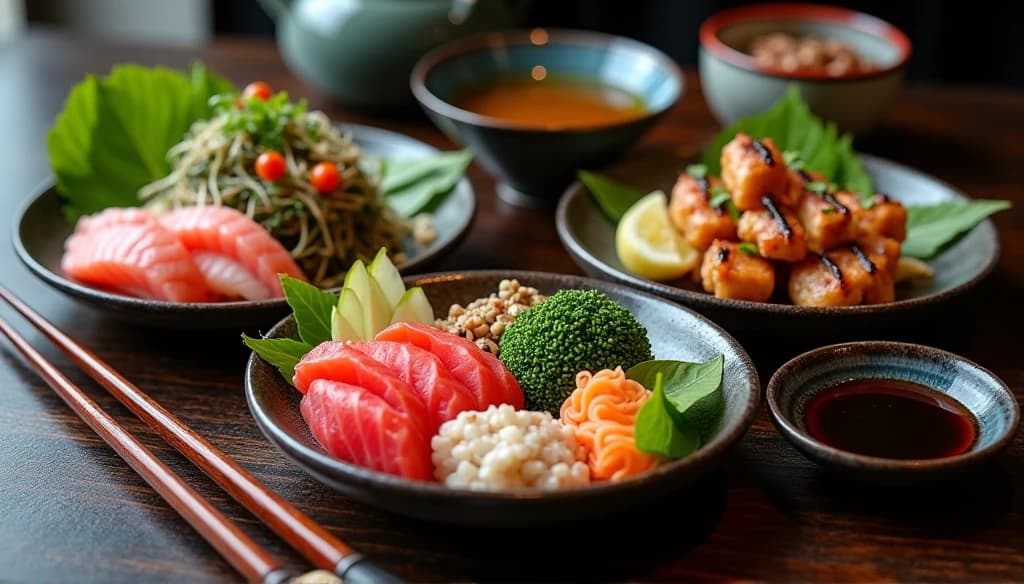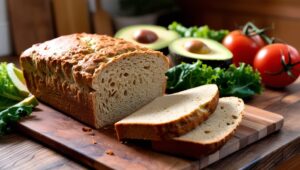Table of Contents
ToggleHave you ever wondered if you can enjoy Japanese food while staying true to your keto diet? Many people assume Japanese cuisine is off-limits because of carb-heavy staples like rice, noodles, and tempura. But what if you could savor the rich flavors of Japanese food without breaking ketosis? The good news is that with a little guidance, you can enjoy Japanese cuisine while keeping it keto-friendly.
In this guide, we’ll explore the best keto Japanese dishes, substitutions for high-carb ingredients, and practical tips to stick to your low-carb lifestyle without sacrificing flavor.
What Makes Japanese Food Keto-Friendly?
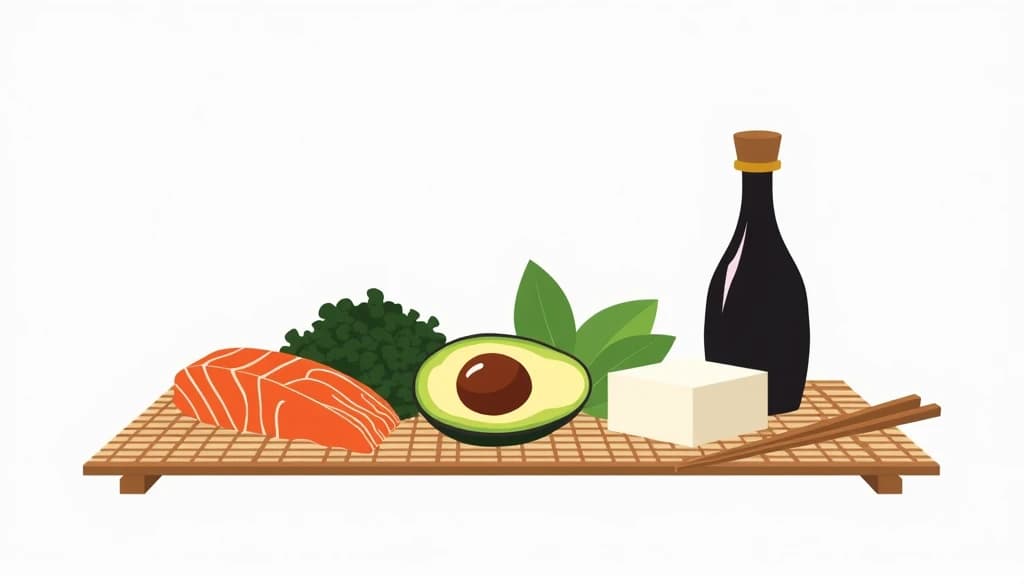
Japan’s culinary culture emphasizes fresh, high-quality ingredients like seafood, vegetables, and fermented items, many of which naturally fit into a keto diet. The keto diet focuses on high fat, moderate protein, and low carbohydrate intake, so traditional Japanese ingredients like fatty fish, seaweed, and tofu are ideal.
However, carbs sneak into the diet through staples like rice, noodles, and sugar-heavy sauces. To stay in ketosis, you’ll need to adjust your choices and look for substitutions.
Best Keto-Friendly Japanese Dishes
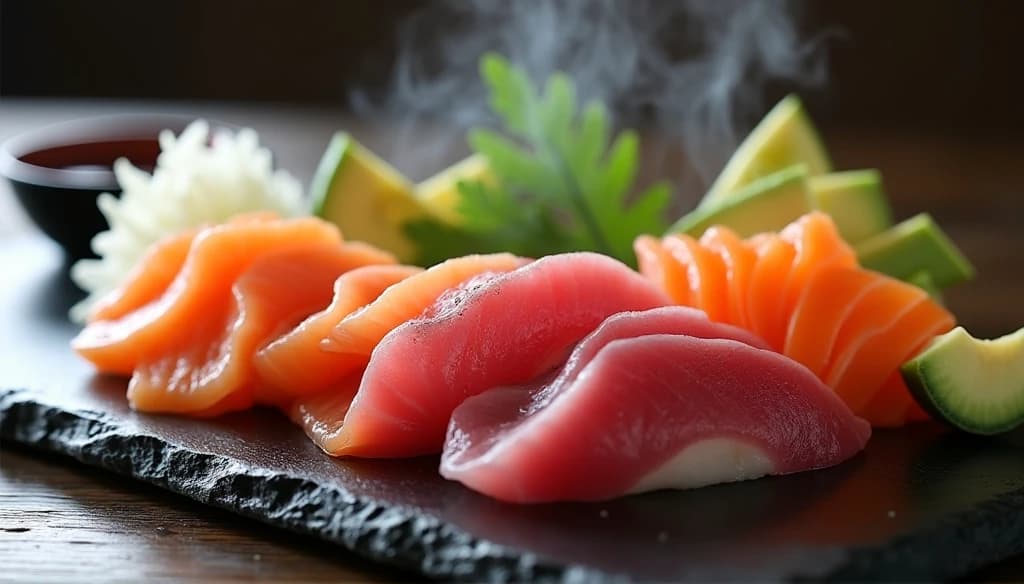
If you’re on keto, you’ll be glad to know that many Japanese dishes can be naturally low-carb or easily modified. Here are some of the top options:
1. Sashimi (Raw Fish)
- Why It’s Keto-Friendly: Sashimi is pure protein, consisting of raw fish like tuna, salmon, or mackerel. It’s carb-free and rich in healthy fats, especially omega-3s.
- Pro Tip: Pair sashimi with soy sauce or tamari (a gluten-free alternative) and avoid dipping it in sweetened sauces.
2. Miso Soup
- Why It’s Keto-Friendly: Traditional miso soup is made from fermented soybean paste, dashi broth, and tofu, making it a low-carb starter.
- Caution: Ensure the soup doesn’t include added noodles or high-carb ingredients like sweetened miso paste.
3. Grilled Yakitori (Skewered Chicken)
- Why It’s Keto-Friendly: These skewers are cooked over charcoal with minimal seasoning. Opt for fatty cuts like chicken thighs or skin.
- Caution: Avoid yakitori glazed with teriyaki sauce, which contains sugar.
4. Sukiyaki (Hot Pot)
- Why It’s Keto-Friendly: Sukiyaki can be adapted by skipping the noodles and adding keto-friendly vegetables like mushrooms, spinach, and bok choy.
- Pro Tip: Use low-carb soy sauce or tamari for seasoning.
5. Seaweed Salad
- Why It’s Keto-Friendly: Seaweed is low in carbs and packed with nutrients like iodine and fiber.
- Caution: Many pre-made seaweed salads are sweetened, so make your own at home for better control.
Common High-Carb Foods to Avoid
While Japanese cuisine offers many keto-friendly options, there are certain foods you’ll need to steer clear of:
| Food Item | Carb Content (Per Serving) | Reason to Avoid |
|---|---|---|
| White Rice | ~45g carbs/cup | High in carbs, a keto no-go |
| Sushi Rolls | ~36g carbs/roll | Contains rice and sugary sauces |
| Tempura | ~15g carbs/piece | Batter-fried, packed with carbs |
| Ramen Noodles | ~40g carbs/bowl | Wheat-based noodles |
| Teriyaki Sauce | ~12g carbs/tbsp | High sugar content |
How to Modify Japanese Dishes for Keto
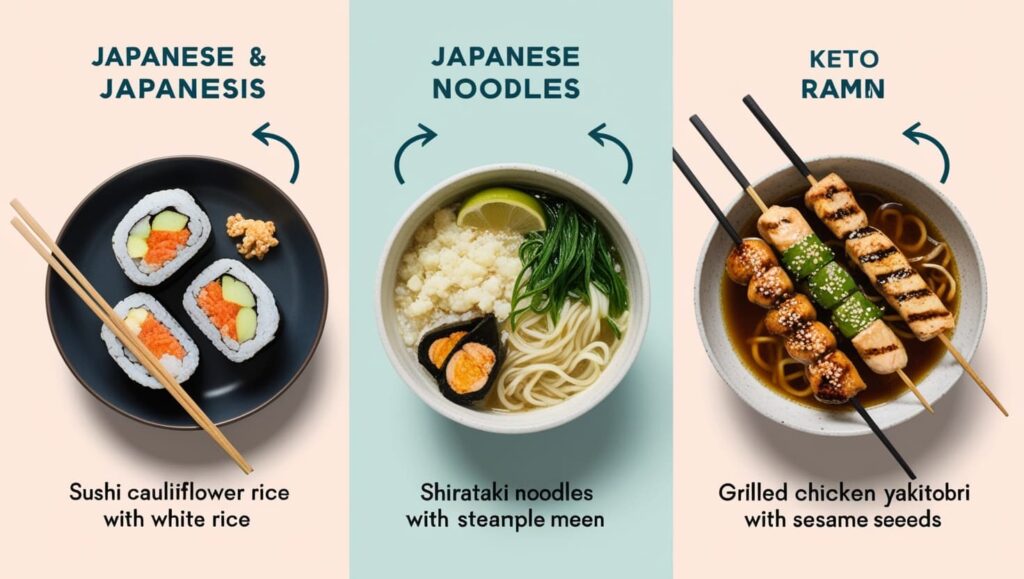
The beauty of Japanese cuisine lies in its flexibility, which makes it easy to adapt recipes to fit a keto lifestyle. Here are some tips:
1. Replace Rice with Cauliflower Rice
- Use riced cauliflower as a substitute for white rice in sushi or donburi dishes.
- Bonus: Add sesame oil for an authentic Japanese flavor.
2. Swap Noodles with Shirataki Noodles
- Shirataki noodles, also known as “miracle noodles,” are made from konjac yam and are nearly carb-free.
3. Choose Sugar-Free Sauces
- Opt for coconut aminos or make your own keto teriyaki sauce using stevia or erythritol as a sweetener.
4. Focus on Protein and Fat
- Load your plate with protein-rich options like fatty fish, pork belly, or eggs. Add healthy fats like avocado.
Keto-Friendly Japanese Snacks and Condiments
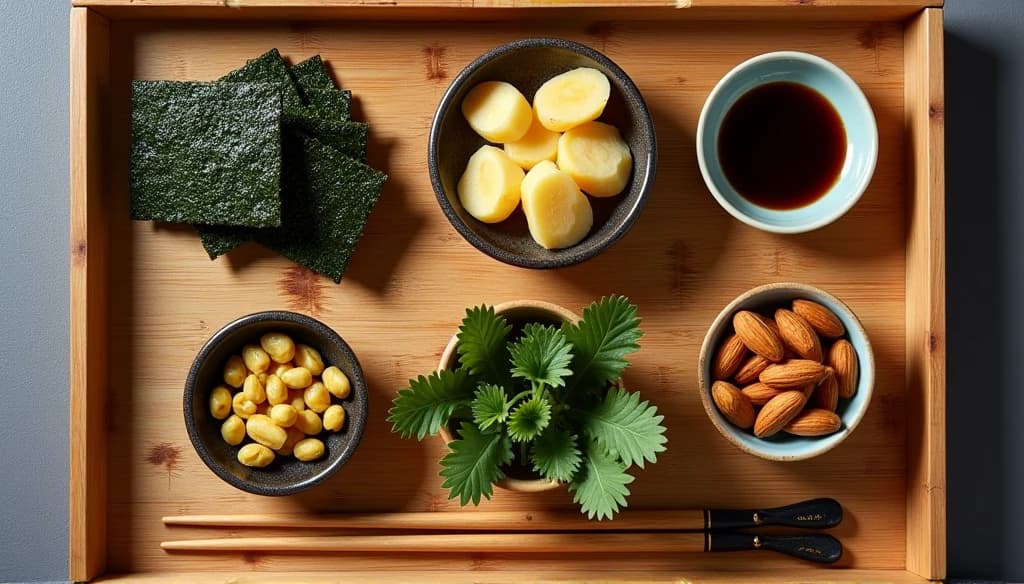
While main dishes are easy to adapt, snacks and condiments can be tricky. Here are some keto-approved options:
Snacks:
- Nori (Seaweed Snacks): A perfect on-the-go option, low in carbs and high in minerals.
- Wasabi Almonds: Check for sugar-free versions.
- Hard-Boiled Quail Eggs: Often available at Japanese markets.
Condiments:
- Tamari: A low-carb soy sauce alternative.
- Sesame Oil: Adds rich flavor without carbs.
- Pickled Ginger (Sugar-Free): Check labels for added sugar.
Comparative Table: Keto vs Non-Keto Japanese Foods
To make meal planning easier, here’s a quick comparison:
| Category | Keto-Friendly Option | Non-Keto Option |
|---|---|---|
| Sushi | Sashimi, cucumber rolls | Maki rolls with rice, tempura rolls |
| Soups | Miso soup, clear broth | Udon or ramen soups |
| Noodles | Shirataki noodles | Ramen, soba, udon |
| Sauces | Tamari, coconut aminos | Teriyaki sauce, eel sauce |
| Sides | Seaweed salad, edamame | Fried rice, sweetened pickles |
Final Thoughts on Keto Japanese Food
Staying keto while enjoying Japanese food is entirely possible with a bit of planning and creativity. Focus on fresh, whole foods like sashimi, seaweed, and grilled meats, and avoid carb-heavy staples like rice and noodles. By making smart substitutions and choosing keto-friendly snacks and condiments, you can enjoy the rich flavors of Japanese cuisine without compromising your diet.
Ready to embark on your keto Japanese food journey? The next time you visit a Japanese restaurant or cook at home, you’ll have all the tools to make delicious low-carb choices!
By following this guide, you’ll not only stay in ketosis but also discover a new appreciation for the versatility of Japanese cuisine.
FAQs About Keto Japanese Food
Can I eat sushi on a keto diet?
Yes, but stick to sashimi (raw fish without rice) or keto-adapted sushi rolls made with cauliflower rice or cucumber.
Are shirataki noodles really keto-friendly?
Absolutely! Shirataki noodles are extremely low in carbs and calories, making them a perfect substitute for traditional noodles.
Is soy sauce keto-approved?
Soy sauce is low in carbs, but tamari is a better option since it’s gluten-free and has no added sugars.
Can I eat tempura on keto?
No, tempura is made with wheat-based batter, which is high in carbs. Opt for grilled or broiled dishes instead.
What’s the best keto-friendly Japanese dessert?
Matcha (unsweetened green tea powder) is a great base for keto desserts. Try a matcha chia pudding made with almond milk and stevia.

